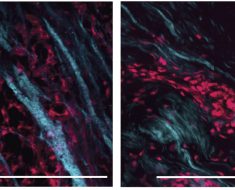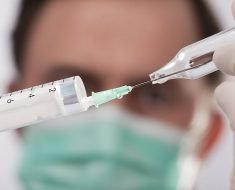In a recent paper posted to the medRxiv* preprint server, researchers evaluated the characteristics and prevalence of bacterial co-infections with severe acute respiratory syndrome coronavirus 2 (SARS-CoV-2) infections.

Background
Over 6.4 million people have died globally from coronavirus disease 2019 (COVID-19), a highly infectious and crippling illness brought on by the virus named SARS-CoV-2. Moreover, more than one million COVID-19-linked mortalities were reported in the United States (US).
Additional to co-morbidities, like diabetes and hypertension, co-infections with bacteria are among the myriad co-morbidities that are indicated to affect SARS-CoV-2 outcomes in patients. Eventually, empiric antimicrobial treatment has been given often to affected COVID-19 patients. However, because of rising healthcare expenditures, a surge in adverse drug responses, and the development of antibiotic resistance, extensive antibiotic use continues to be debatable.
About the study
The main objective of the present multicenter, retrospective study was to evaluate the frequency of bacterial co-infections and to characterize any patterns found during the peak of the SARS-CoV-2 pandemic. For this, the team looked on SARS-CoV-2 and bacterial co-infections from outpatient reverse transcription polymerase chain reaction (RT-PCR) analysis in Texas, US, between April 2020 and April 2021. Additionally, the research addressed whether giving antibiotics was necessary during the ongoing COVID-19 pandemic.
The authors aimed to ascertain how patient characteristics, including sex, race, age, and ethnicity, affected the prevalence of bacterial and SARS-CoV-2 infection. Further, they sought to compare the incidence of common respiratory pathogens inside the nasopharynx of COVID-19-negative and positive patients.
The requisition forms included patient demographics, such as the date of birth, sex, race, and ethnicity, and were also self-reported by the study volunteers. During the screening period, the subjects gave broad consent to the research. Moreover, patient data were anonymized utilizing the safe harbor method before being analyzed.
Results
The current work found bacterial pathogens, like Streptococcus pneumoniae, Haemophilus influenzae, Staphylococcus aureus, Moraxella catarrhalis, and Klebsiella pneumoniae, among 31.9% of participants, including 32% in COVID-19-positive patients and 31% across COVID-19-negative patients. The scientists discovered no substantial variations in the bacterial infection rates across SARS-CoV-2-positive and negative cohorts. Besides, while the present bacterial co-infection incidence may be greater than those anticipated from many investigations, it was common in the literature for research using nasopharyngeal swabs to find elevated rates of bacteria than those depending on other sources like sputum.
The researchers mentioned that while various factors could contribute to the differences and similarities between the current results and those of other studies, it was crucial to note that the kinds of bacterial infections found might alter over time or vary significantly between hospital and outpatient settings. Besides, they stated that overall, the current investigation and comparisons of the study's information with those from previous studies showed no proof of higher bacterial infection rates across SARS-CoV-2-positive individuals.
Furthermore, the study data support a higher prevalence of SARS-CoV-2 infections among Hispanics by 75% compared to non-Hispanics or people who did not self-report their ethnicity. Additionally, according to the study, Staphylococcus aureus (S. aureus) was discovered more frequently in males and people under the age of 65 years. On the other hand, other patient demographics did not seem to affect the bacterial presence.
Conclusions
The study findings indicate Streptococcus pneumoniae, Haemophilus influenzae, Staphylococcus aureus, Moraxella catarrhalis, and Klebsiella pneumoniae were the most commonly discovered bacterial pathogens among both SARS-CoV-2-negative and SARS-CoV-2-positive patients. Indeed, the study data suggested that these bacterial pathogens were noticeable at similar percentages among these two patient cohorts.
The authors also identified S. aureus in a drastically higher percentage of men compared to women and individuals below the age of 65 versus those aged 65 or older. Finally, they discovered that COVID-19 positivity was more common in Hispanics than in non-Hispanics.
Overall, the study findings imply that fast diagnostic analyses for bacterial infections may be advantageous for SARS-CoV-2 patients and that this knowledge may help define tailored antimicrobial therapy. The team identified the bacterial species, frequency of bacterial co-infections, and groups most prone to infection, such as males and people younger than 65, among COVID-19 patients. They believed this information would help in the proper antimicrobial selection in bacterial infection and help identify groups that would most gain from simultaneous antibiotic treatment or testing for respiratory pathogens during COVID-19.
*Important notice
medRxiv publishes preliminary scientific reports that are not peer-reviewed and, therefore, should not be regarded as conclusive, guide clinical practice/health-related behavior, or treated as established information.
- James Shurko, Chris A Mares, Robert B. Page, Kristina Lopez, Vivian Nguyen, Niti Vanee, Pramod Kumar Mishra. (2022). Prevalence and Characterization of Bacteria Present in the Nasopharynx of Outpatients with and without SARS-CoV-2. medRxiv. doi: https://doi.org/10.1101/2022.08.17.22278915 https://www.medrxiv.org/content/10.1101/2022.08.17.22278915v1
Posted in: Medical Science News | Medical Research News | Disease/Infection News
Tags: Antibiotic, Antibiotic Resistance, Bacteria, Coronavirus, Coronavirus Disease COVID-19, covid-19, Diabetes, Diagnostic, Frequency, Healthcare, Hospital, Nasopharyngeal, Pandemic, Polymerase, Polymerase Chain Reaction, Research, Respiratory, SARS, SARS-CoV-2, Severe Acute Respiratory, Severe Acute Respiratory Syndrome, Staphylococcus aureus, Streptococcus pneumoniae, Syndrome, Transcription, Virus

Written by
Shanet Susan Alex
Shanet Susan Alex, a medical writer, based in Kerala, India, is a Doctor of Pharmacy graduate from Kerala University of Health Sciences. Her academic background is in clinical pharmacy and research, and she is passionate about medical writing. Shanet has published papers in the International Journal of Medical Science and Current Research (IJMSCR), the International Journal of Pharmacy (IJP), and the International Journal of Medical Science and Applied Research (IJMSAR). Apart from work, she enjoys listening to music and watching movies.
Source: Read Full Article





